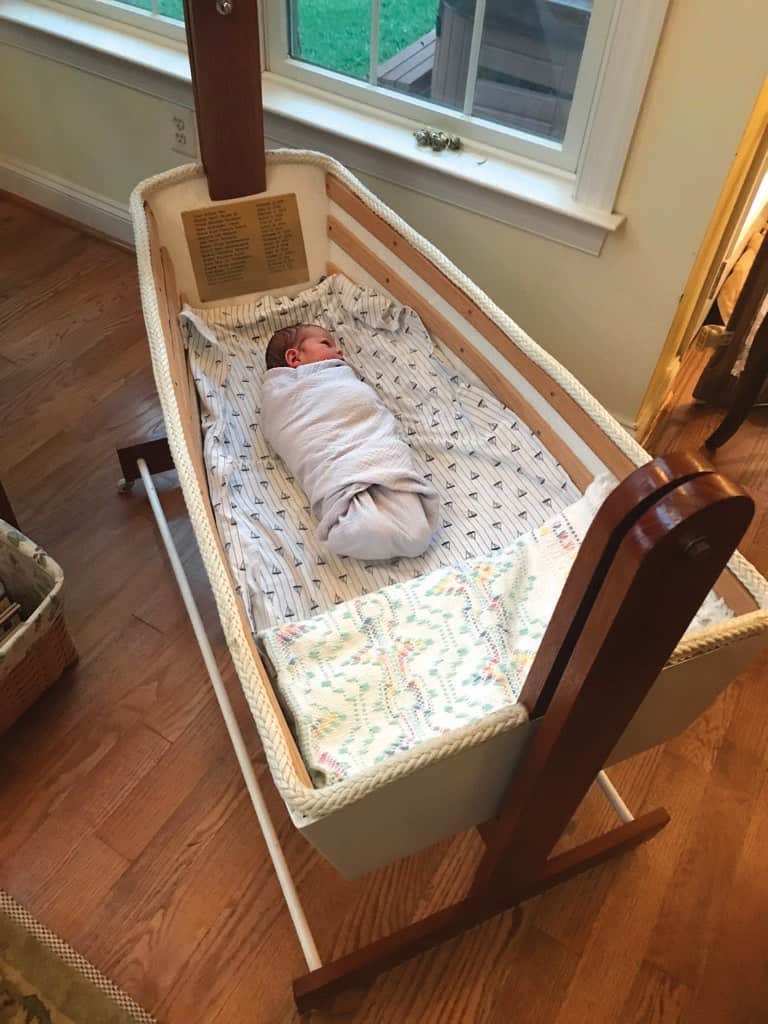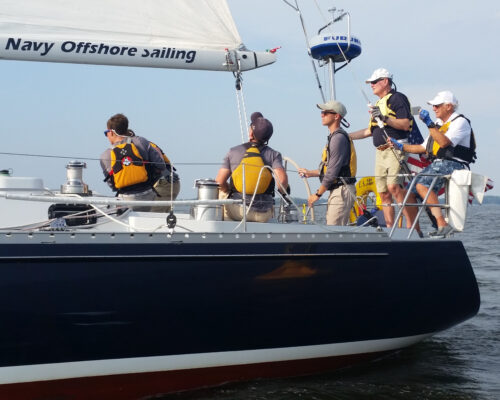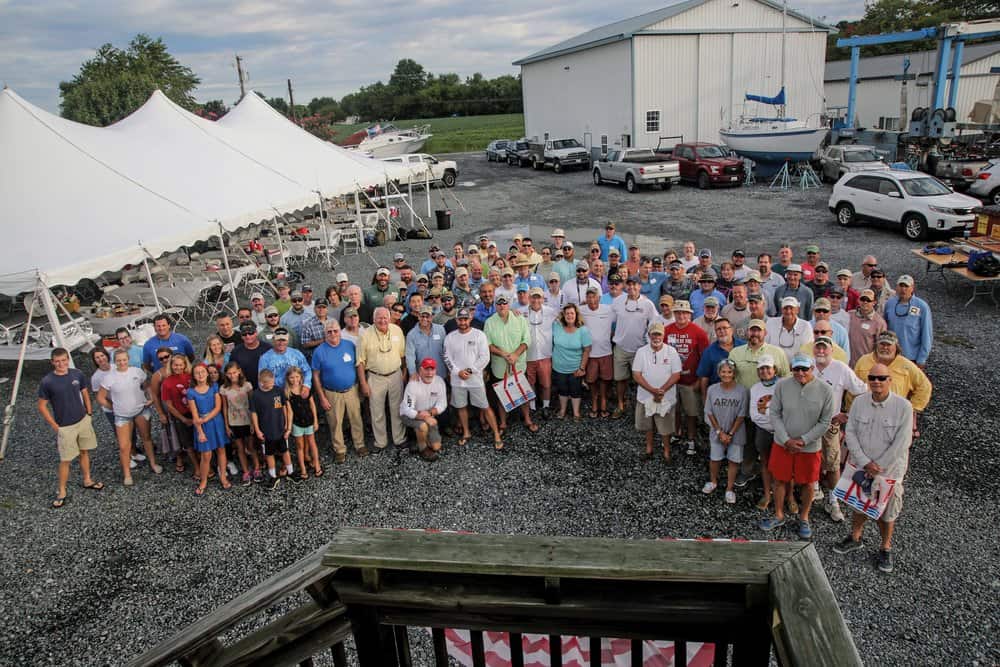A storied command for the Bay’s smallest sailors.
There’s an exclusive club of Chesapeake boaters that doesn’t get much attention, although the club’s been around a while and its membership steadily grows. It’s a motley crew, to be sure—only a few members are now old enough to vote, some are just learning to tie their shoes, and others are more concerned with making Rice Krispy treats than sailboat racing. But each member has his or her name etched into the club plaque, a formal record of their membership and a commemoration of their time spent in the club’s flagship vessel: A homemade sailing cradle.
The Infant Yacht Club began with sailor, woodworker, and honorary commodore-for-life Steve Eagley.
About 20 years ago when Eagley learned that sailing friends from their time at St. Mary’s College were expecting a baby, he decided to stray from the predictable diaper bag cake and onesie gifts. Being drawn to unique creations and special traditions, he decided to present the couple with a one-of-a-kind treasure: a scaled-down Optimist dinghy in the form of a rocking cradle, without the rig.
The Optimist, or “Opti”, as you probably know, is a boxy, stable and perfectly sized training boat for beginner sailors, and, it turns out, beginning humans. Over several weeks, Eagley worked in a friend’s basement, sticking close to a set of Optimist plans but scaling down and adjusting here and there to ensure the vessel was baby-safe. Envisioned not as a silver spoon but as more of a Chesapeake Bay “working cradle,” as Eagley describes it, he kept things simple. The Opti’s bow and transom are wood, her bottom and sides are honeycomb-plastic-cored fiberglass (Nida-Core for composite engineering and modern boatbuilding geeks). She’s finished with oak strips inside, a three-strand rub rail around the gunwales, and a varnished teak frame, which allows it to gently rock like a traditional cradle, or even a true Opti bobbing on the water.
The gift was a hit, but once the baby outgrew it, the cradle seemed fated for a lifetime of collecting stuffed animals and dust in the corner of the nursery. The parents returned it to Eagley, who decided that perhaps the cradle could become something of a “perpetual trophy for other babies,” he says. Thus began the tradition of passing it around to friends, with each family returning it to him when their liveaboards passed the early stages of babyhood. So, off the cradle would go to a new nursery to sway another newborn to sleep.
Eagley captained the offshore team at St. Mary’s College and has navigated waters near and far, thus the Opti-cradle mariners are mostly sailing connections. It’s good to catch up with old friends and hear if they might be interested in temporarily commanding the cradle. It’s an excuse to get in touch. “‘I would love for you to have this…here’s the story’,” he says to expectant parents.
Once the cradle has a new slip, Eagley might ask for a photo of the boat in use for an unofficial yearbook of sorts. He makes it ship-shape and delivers it to the next family. It’s been all around the Bay and as far north in the watershed as New York State. The roster of Opti babies sits around 20, and Eagley says he’d love to see the tradition continue on.
As if things couldn’t get any sweeter for the nautical newborns, he made a plaque where the names of every sleepy captain are engraved. It’s continuously updated and has been replaced once to accommodate the growing list of crew members.
Regina and Tom Weaver, who became acquainted with Eagley from the Annapolis racing circuit, took delivery of the cradle for Imogen, who has recently outgrown it.
“When Tom told me Steve was bringing by the Opti cradle, I thought he was insane,” Regina says, assuming the vessel was a full-sized Optimist. “It would be sitting in our backyard for five years at least before we would use it.” Once she saw it, perfectly sized for the voyage, she welcomed it in. “The cradle was super functional for us and a great conversation piece. It fit perfectly beside our bed,” she explains.
“It’s a fun connection with other sailing folks in the area who have also used the cradle,” says Tom. “It’s like a little secret yacht club
for newborns.”
Lew Van Wambeke, a St. Mary’s friend, inherited the cradle when son Jared, now 10, was born. “It is so cool to see all the nameplates inscribed with these families who used the cradle, all connected in various ways to Steve and family.” He adds that the Opti is just so darn good looking, “Everyone was asking us where they could buy one.”
Although it’s unlikely that Eagley will build hull number two, it’s likely that he’ll keep busy as the cradle continues its Chesapeake passages. He’s a financial planner living outside of Annapolis where he’s restoring a farmhouse on a picturesque, rolling spread with his rescue horses and other animals. He spends time with his daughters, Opti crew members Norah and Audrey, aged 14 and 11; races a laser each week; and makes it to the Caribbean and his Voyage 520 sailing catamaran when he can.
As he reflects on the Opti cradle and where it’s been and where it’s going, it’s clear that it has meant a lot to him as a tether to friends, family, and the future. “Whenever I build something, the intent, for me, whether it’s restoring something or building something new, it’s something that can get passed to kids,” he says. “I hope my kids will use it, their kids will use it…” h




